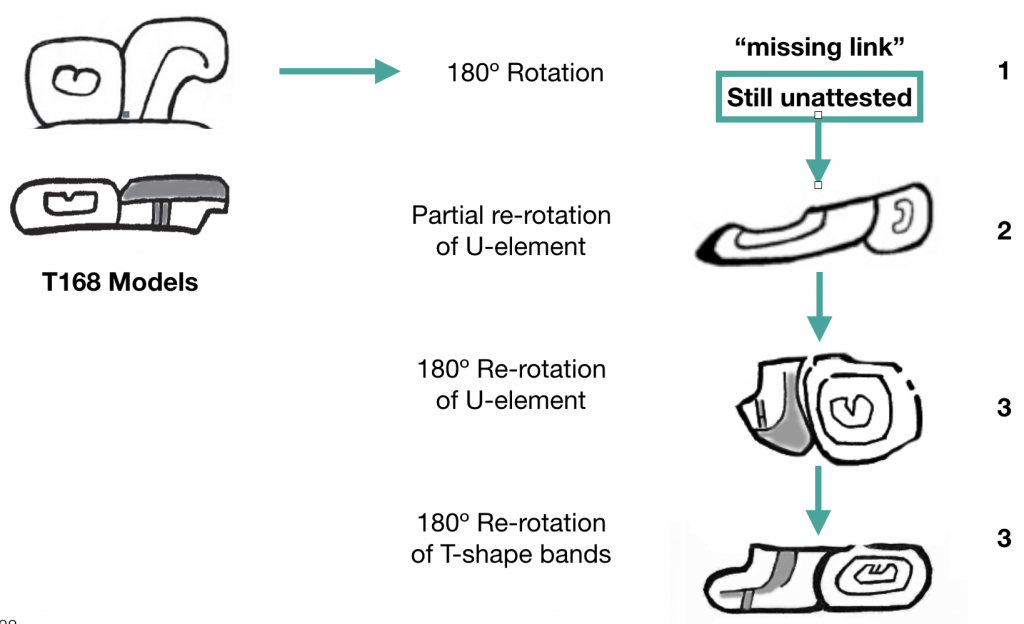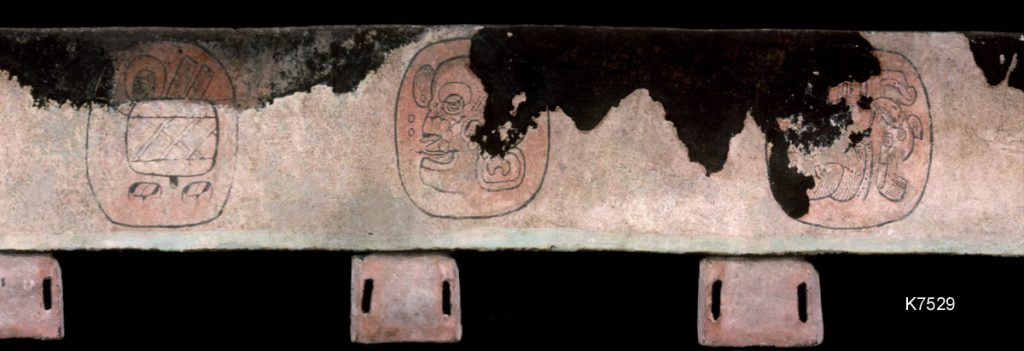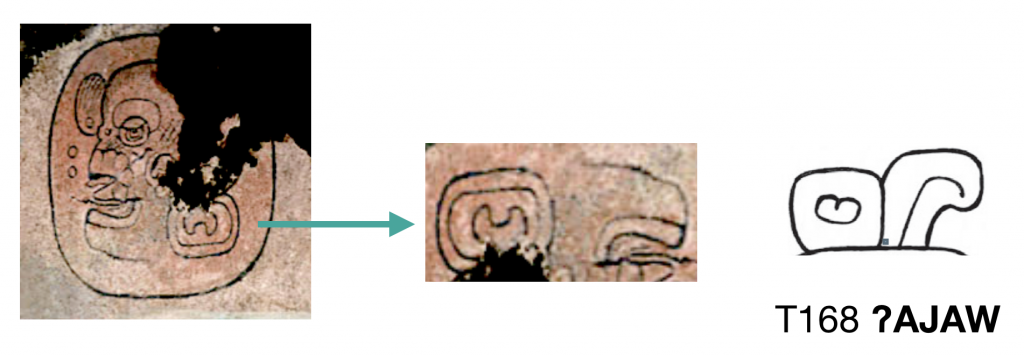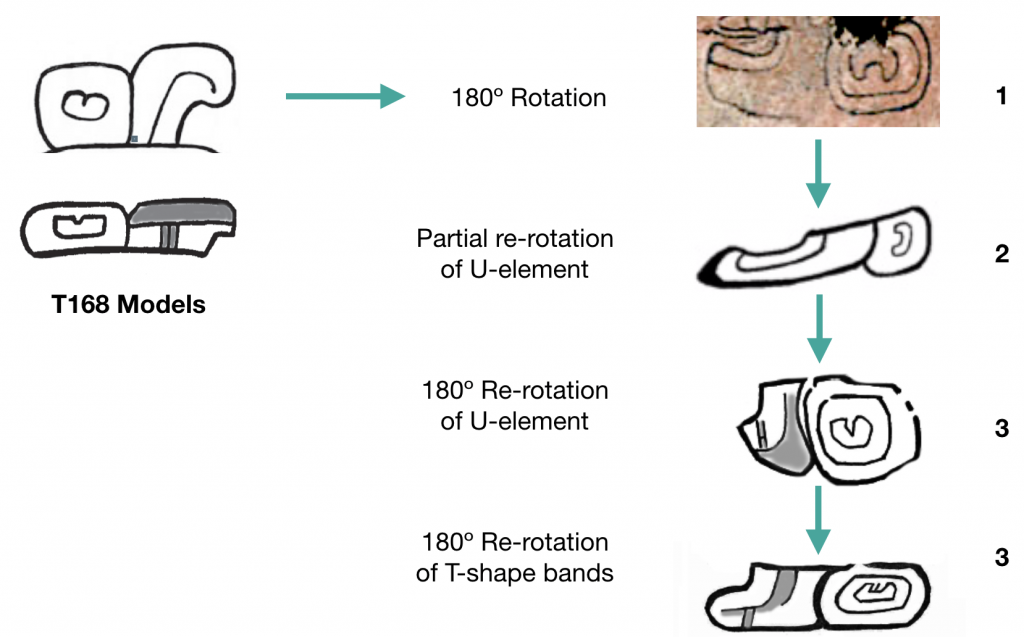Updates on the Paleography of T168/2M1a ʔAJAW ‘lord, ruler’ and T130/2S2 wa
David F. Mora-Marín
davidmm@unc.edu
University of North Carolina
Chapel Hill
10/26/2020
In Mora-Marín (2016) I proposed that T130/2S2, the syllabogram wa, originated in T168/2M1a ʔAJAW for ʔaajaaw ‘lord, ruler’. This process involved the two components of T168 rotating together, but their respective internal graphic elements “re-rotating” at separate points in time subsequently. One of these, Mora-Marín (2016) argued, the sign containing the U-shaped element, T517 in Thompson’s (1962) catalog, is in origin a part of the body: a human brow. The other consists of a miniature, simplified version of the T518, itself a simplified version of T584, the day sign REED. See Mora-Marín (2016:Figs. 3-5 and Figs. 7-8) for examples supporting these identifications.
Figure 1 illustrates how I proposed the process of graphic innovation leading from T168 to T130 took place: 1) T168 experienced a 180-degree rotation, resulting in an upside-down U-shaped element, i.e. an upside-down T517; 2) the resulting design, and more specifically, the component with the U-shaped element only, T517, experienced a 90-degree rotation; 3) another 90-degree rotation of the same component took place, reorienting the U-shaped element of T517 once again right-side up; and 4) the other component, T518 (< T584), experienced a reorientation of its internal graphic elements, a 180-degree rotation (or “re-rotation”). This is the sequence of events during the Early Classic period. Soonafter, the U-shaped element would shift to an O-shaped element, part of a broader process of regular graphic change described by Lacadena (1995).
Figure 1
In my 2016 paper I was forced to hypothesize stage 1), with no actual examples to confirm it. However, recently I realized that there is at least one example to support such a stage. Figure 2 shows a roll-out photo of vase K7529 (http://research.mayavase.com/kerrmaya_list.php?_allSearch=&hold_search=&x=0&y=0&vase_number=7529&date_added=&ms_number=&site=). The glyph seen in the middle of the photo, 2ka-wa, for *käkäw ‘cacao’, is the key to solving the current puzzle.
Figure 2
Indeed, the graphic design of T130/2S2 wa used in this glyphic spelling, as seen in Figure 3, corresponds exactly to the “missing link” I had hypothesized: essentially, a version of T168/2M1a that has been rotated 180 degrees with no readjustments.
Figure 3
This graphic design of T130/2S2 can now be used to fill in the model for the graphic innovation of T130/2S2 out of T168/2M1a as in Figure 4.
Figure 4
In Mora-Marín (2016) I also discuss a different graphic design of T130/2S2, one with a spiral-shaped graphic element instead of the T517 component, for which I hypothesized stages which I had not yet identified in the glyphic record. The search continues…
References
Lacadena García-Gallo, Alfonso. 1995. Evolución formal de las grafías escriturarias mayas: implicaciones históricas y culturales. Ph.D. Dissertation, Universidad Complutense de Madrid.
Mora-Marín, David F. 2016. A Study in Mayan Paleography: The History of T168/2M1a ʔAJAW ‘Lord, Ruler’ and the Origin of the Syllabogram T130/2S2 wa. Written Language and Literacy 19:1-58. https://www.academia.edu/31869577/A_study_in_Mayan_paleography_The_history_of_T168_2M1a_ʔAJAW_Lord_Ruler_and_the_origin_of_the_syllabogram_T130_2S2_wa.



